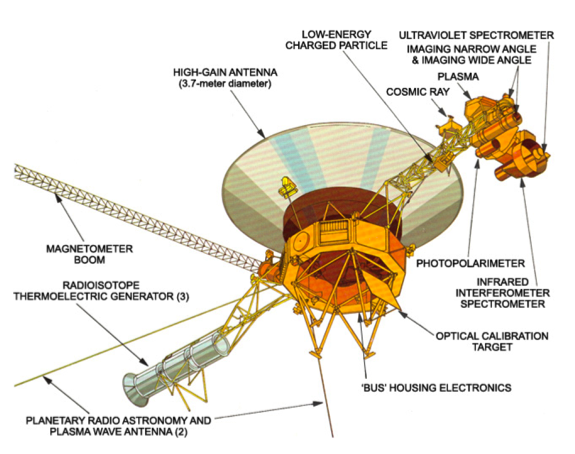
Instrument Characteristics
The magnetic field experiment carried out on the Voyager 1 mission consists of dual low field (LFM) and high field magnetometer (HFM) systems. The dual systems provide greater reliability and, in the case of the LFM's, permit the separation of the spacecraft magnetic fields from the ambient fields. Additional reliability is achieved through electronics redundancy. The wide dynamic ranges of +/- 0.002 G for the LFM's and +/- 20 G for the HFM's, low quantization uncertainty (+/- 12.4, 488 nanoTesla respectively), low sensor RMS noise level (0.006 nanoTesla), and the use of data compaction schemes to optimize the experiment information rate all combine to permit the study of a broad spectrum of phenomena during the mission.
MAG Science Objectives
The investigations of the magnetic fields and magnetospheres of the major planetary systems in the outer Solar System and their interactions with the solar wind are primary objectives of the space exploration program to be conducted during the Voyager 1 &2 missions. In addition, the investigation of the interplanetary magnetic field phenomena during the flights is of fundamental importance both to the understanding of the magnetospheric observations and to a number of outstanding questions in basic plasma physics and in the general dynamics of the solar wind
References Helpful in Scoping the Mission
Mission Description
Spacecraft Description
Spacecraft Description
The Mag Data
Instrument Description - Also see Space Science Reviews 21 (1977-Issue 3) 235-257.
The Data are located at the PDS/PPI node.
The Data are located at the PDS/PPI node.
Publications - A listing of team members to facilitate literature searches.
 PDS: The Planetary Atmospheres Node
PDS: The Planetary Atmospheres Node


